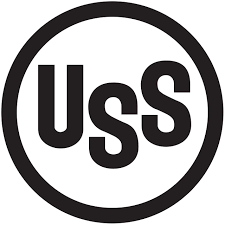In 1952, the United States faced a significant industrial crisis as the nation's steel industry came under federal control for the first time since World War II. This extraordinary measure, undertaken by President Harry S. Truman, marked a critical moment in the history of labor relations, government intervention in the economy, and the balance of power between industry and government. The decision to place steel plants under federal control stemmed from a protracted labor dispute between the United Steelworkers of America (USWA) and leading steel companies, including U.S. Steel Corporation, Bethlehem Steel Corporation, and Republic Steel Corporation. Negotiations between the two sides had broken down over issues such as wages, benefits, and working conditions, leading to the threat of a nationwide strike. With the possibility of a steel strike looming, President Truman invoked the powers of the Taft-Hartley Act, a federal labor law enacted in 1947, to seize control of the nation's steel mills. Citing concerns about the potential impact of a strike on national defense and the economy, Truman argued that federal intervention was necessary to ensure the uninterrupted production of steel, a vital strategic resource used in defense manufacturing and infrastructure projects. On April 8, 1952, President Truman issued Executive Order 10340, directing Secretary of Commerce Charles Sawyer to take possession of and operate the steel mills. The order authorized the government to assume control of the plants and facilities of the nation's leading steel companies, effectively placing them under federal management. The decision to seize control of the steel industry sparked immediate controversy and legal challenges. Steel companies, supported by conservative politicians and business interests, argued that Truman's actions constituted an unconstitutional overreach of executive power. They contended that the president lacked the authority to seize private property without due process of law and without explicit authorization from Congress. The case eventually made its way to the Supreme Court, which heard oral arguments in the landmark case of Youngstown Sheet & Tube Co. v. Sawyer. In a landmark decision handed down on June 2, 1952, the Court ruled against the Truman administration, declaring that the president's seizure of the steel mills was unconstitutional. The Court held that the president's authority as commander-in-chief did not extend to the domestic economy and that only Congress had the power to enact such sweeping measures. The Supreme Court's ruling in the Youngstown case dealt a significant blow to President Truman and the concept of executive power. It reaffirmed the principle of separation of powers and the limitations of presidential authority, establishing an important precedent for future conflicts between the executive and legislative branches. In the aftermath of the Supreme Court's decision, the federal government relinquished control of the steel mills, and negotiations between labor and management resumed. Eventually, a settlement was reached, averting a nationwide steel strike and allowing production to resume under normal conditions. The episode of federal control of steel plants in 1952 remains a contentious and consequential chapter in American history. It highlighted the tensions between labor and management, the complexities of government intervention in the economy, and the limits of presidential authority. While the episode ultimately ended without a strike, it left a lasting legacy, shaping debates over labor rights, government regulation, and the balance of power in the United States.
8 April 1952 U.S.A. Steel Plants Under federal Control
